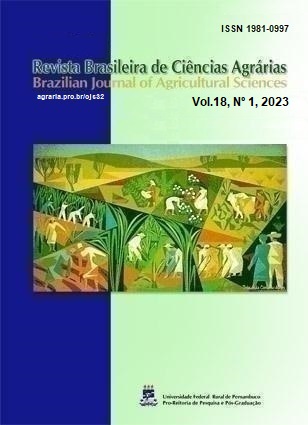Competitive response and level of economic damage of quinoa in the presence of alexandergrass
DOI:
https://doi.org/10.5039/agraria.v18i1a2543Keywords:
Chenopodium quinoa, plant interference, Urochloa plantagineaAbstract
The study of interference and the economic damage level (EDL) of weeds in crops allows more rational management measures to be adopted. Given this, it was the aim of this study to determine the competitive ability and EDL of quinoa genotypes in the presence of alexandergrass. Treatments consisted of three quinoa genotypes (Q 1303, Q 1331, and Q 1324), which competed with 12 alexandergrass densities: 0, 16, 36, 40, 44, 52, 60, 84, 280, 532, and 1,036; 0, 8, 28, 32, 48, 52, 60, 72, 84, 820, and 988; and, 0, 8, 36, 44, 48, 60, 68, 80, 84, 120, 756, and 848 plants m-2, respectively. Alexandergrass plants were evaluated for plant density (PD), ground cover (GC), leaf area (LA), and aerial dry mass (ADM). In quinoa, grain yield, control cost, selling price, and control efficiency were determined. The quinoa genotype Q 1331 shows greater competitive ability when compared to Q 1303 and Q 1324. EDL values varied from 1.81 to 11.74 plants m-2 for genotype Q 1331, which was more competitive in the presence of alexandergrass. The lowest EDL values ranged from 1.21 to 8.12 plants m-2, for the genotypes Q 1303 and Q 1324, which have the lowest competitiveness with the competitor.



